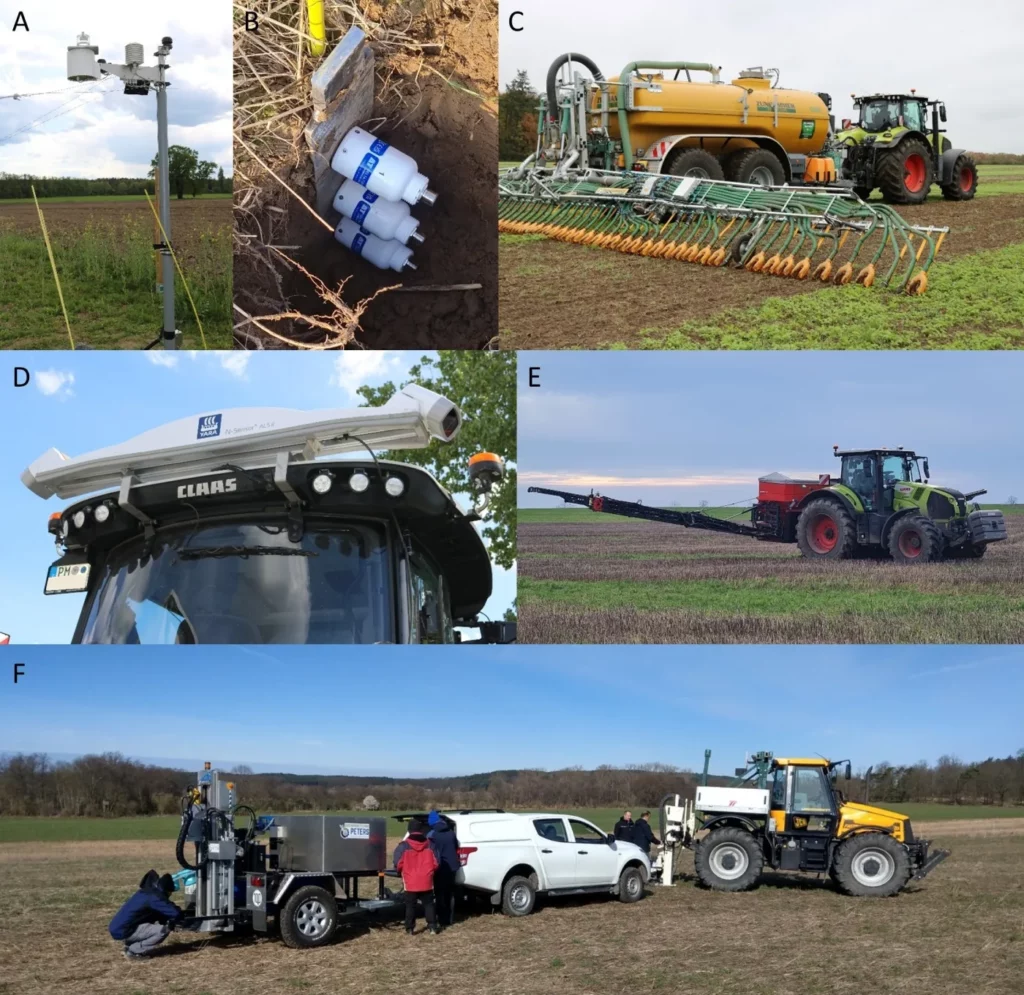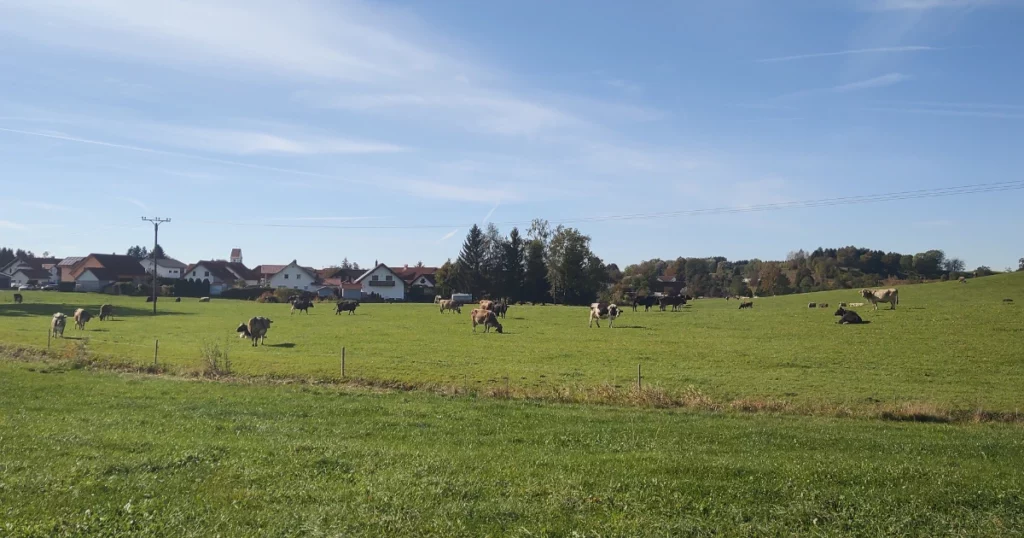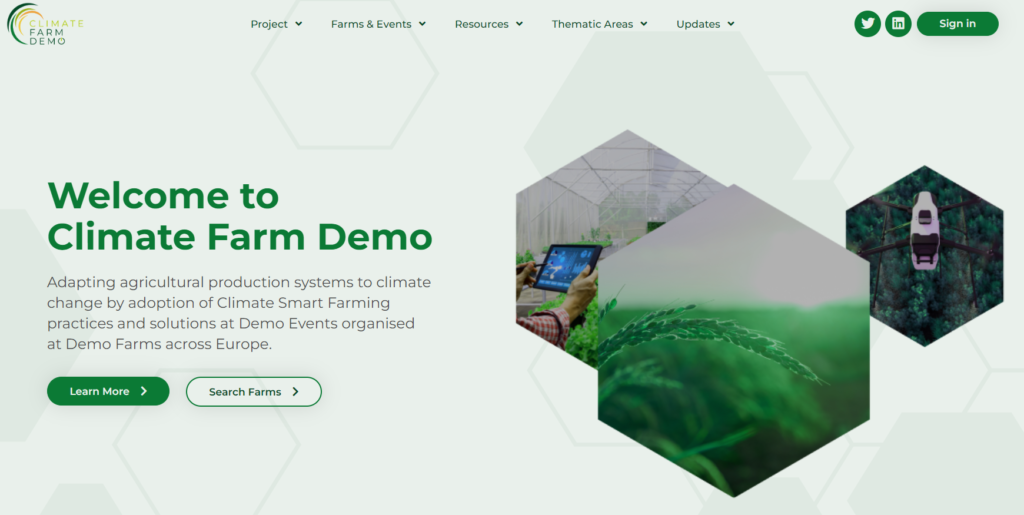Living Lab in Germany develops holistic and precision farming solutions for dairy and mixed crop-livestock farms to adapt to climate change and mitigate emissions and other impacts, with particular regard to the context of the Brandenburg region in Germany. Stakeholders and Pilot Demo Farms from other parts of Germany are also involved. The Leibniz Innovation Farm (InnoHof®) is a core partner of the Living Lab, combining the research infrastructures of the Leibniz Institute for Agricultural Engineering and Bioeconomy (ATB) with those of other research institutions and the resources of the Lehr- und Versuchsanstalt für Tierzucht und Tierhaltung e.V. (LVAT), a farm with an innovation and education mission. InnoHof® aims to achieve “One Health” for humans, animals and the environment in a sustainable and circular bioeconomy, promoting environmental, economic and social sustainability, biodiversity and animal welfare through digitization, crop-forestry-livestock integration, integration of different biomass and residue streams into circular regional agricultural systems. This is particularly consistent with the aims of German Living Lab in the Climate Farm Demo project.
What were your first impressions of the Living Lab, and what were your initial expectations?
We see specific threats for our livestock and mixed farms: weather extremes (i.e. thermal and rainfall anomalies, increasingly dry conditions), decreasing soil quality, increasing heat stress and pathologies affecting animal welfare, health and productivity, increasing costs and societal pressure due to environmental impacts. Precision farming and agro-ecological solutions to increase farm resilience are needed, these two approaches being not mutually exclusive and not necessarily in contradiction. We see digitization and precision farming technologies as strategies that can serve the diversification of farming systems, improving biodiversity and agroecosystem services.
In our Living Lab, strategic aims are: i) to reduce GHG and NH3 emissions through the use of efficient, digitized manure management technologies; ii) to co-develop solutions for emission mitigation and animal welfare in animal housings; iii) to contribute building a holistic thinking around climate change adaptation and mitigation within the agricultural community. In this frame, the more detailed tactical aims are open to being adapted and refined with the stakeholders involved, in collaboration with other projects (e.g., DigiMix-PA, RES4LIVE, DairyMix), and we can already see this happening through the interaction with them.
Do you believe the plans set forth are realistic and achievable? Why?
We see our plans for the Living Lab as ambitious, but grounded in practical possibilities, policy and societal demands, and supported by research and collaboration with stakeholders and project partners. The integration of precision farming with agro-ecological approaches allows us to address climate change adaptation, emission mitigation and multicriteria sustainability in a comprehensive way. Some adaptation and mitigation measures are already proven, available and cost-effective, but may need to be adapted to the local context. The stakeholder engagement ensures that our strategies are discussed, validated and refined based on practical insights and local needs. At the same time, we know that agriculture is under economic pressure: agricultural commodities have a low added value, and efforts to increase added value clash with consumers’ need for affordable products. Other socio-economic issues, such as the lack of workforce and the critical work-life balance of many farmers, can further complicate the picture. For these and other reasons, both agroecological and precision farming approaches face obstacles, for example due to the difficulty of integrating different technologies, or the high initial investment costs with uncertain returns, or the difficulty of implementing more holistic and comprehensive measures. In our Living Lab we are determined to shed light on the multicriteria sustainability of agroecological approaches and to exploit the potential of new technologies for the benefit of the environment and society.

Can you share some of your experiences and insights gained so far with LL and in this project in general?
Our experience with the Living Lab is a process of constantly refining our approach. For instance, our initial plans needed rethinking as new insights emerged. Adaptive measures are proving important to move forward. In this respect, the meetings of the LL Community of Practice (CoP) were important for learning from the experiences of the other Living Labs in the project. Engaging with farmers, researchers, and advisory services in the same setting revealed the importance of tailoring communication. Each group brings its own language and expectations, which can sometimes lead to communication gaps. While we have made significant progress, we still need to advance on the collection of stakeholder views. This is motivating us to explore new methodologies, including more structured interviews and feedback sessions. The interaction with stakeholders is providing us with critical, sometimes unexpected, feedback, which is helping us identify key challenges and align technical solutions with practical realities.
What are some next steps?
In the near future, we want to continue engaging with the Living Lab community in the project, and possibly also with other Living Labs, expand the network of stakeholders participating to the Living Lab activities, continue co-developing field and barn technologies for adaptation to climate change, efficient use of resources and biodiversity. We want to use our research methods, including modelling tools, big data and remote sensing, together with Living Lab methods and farmers knowledge, to contribute to co-design of farming systems that integrate crop and livestock in a ‘One Health’ approach.


